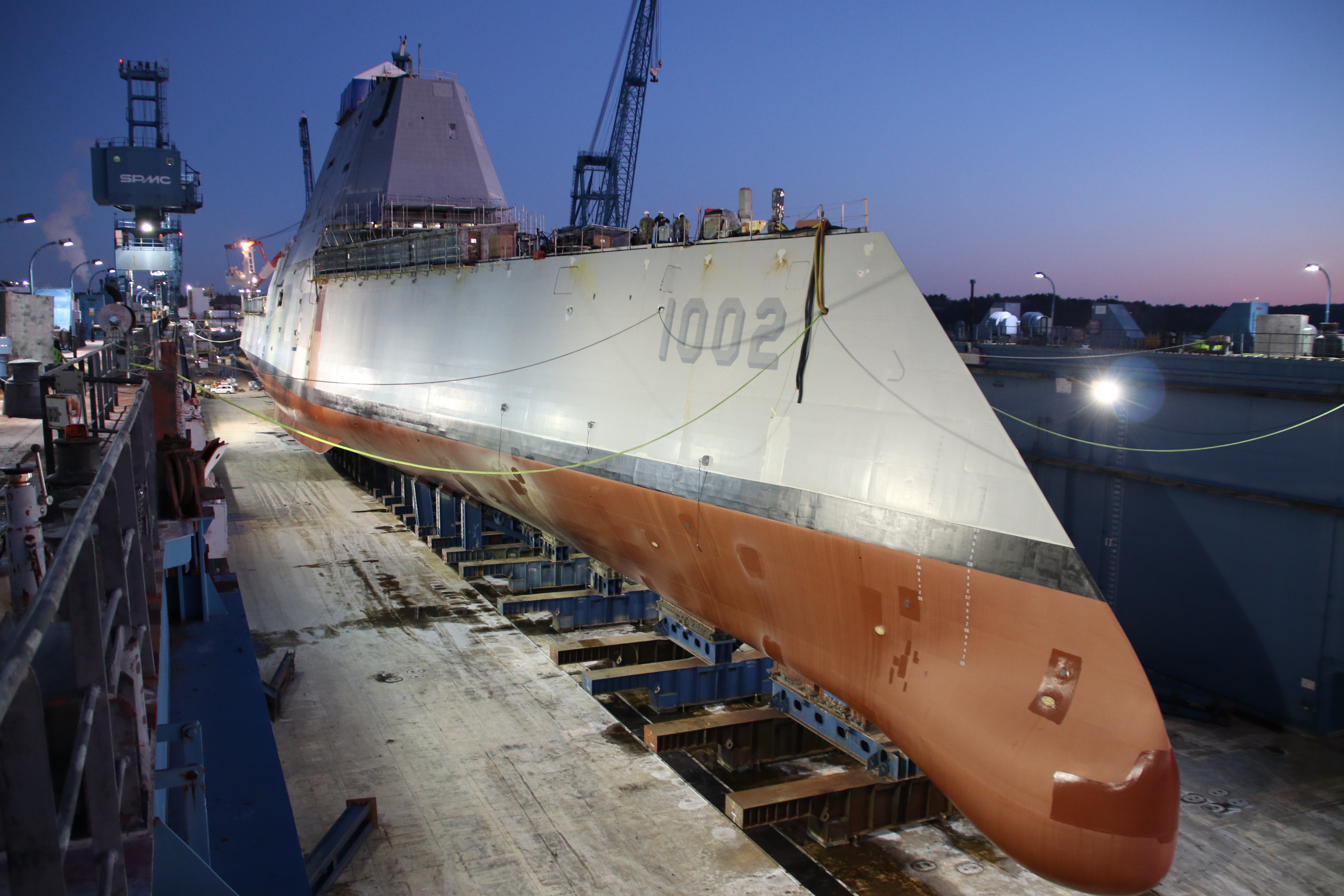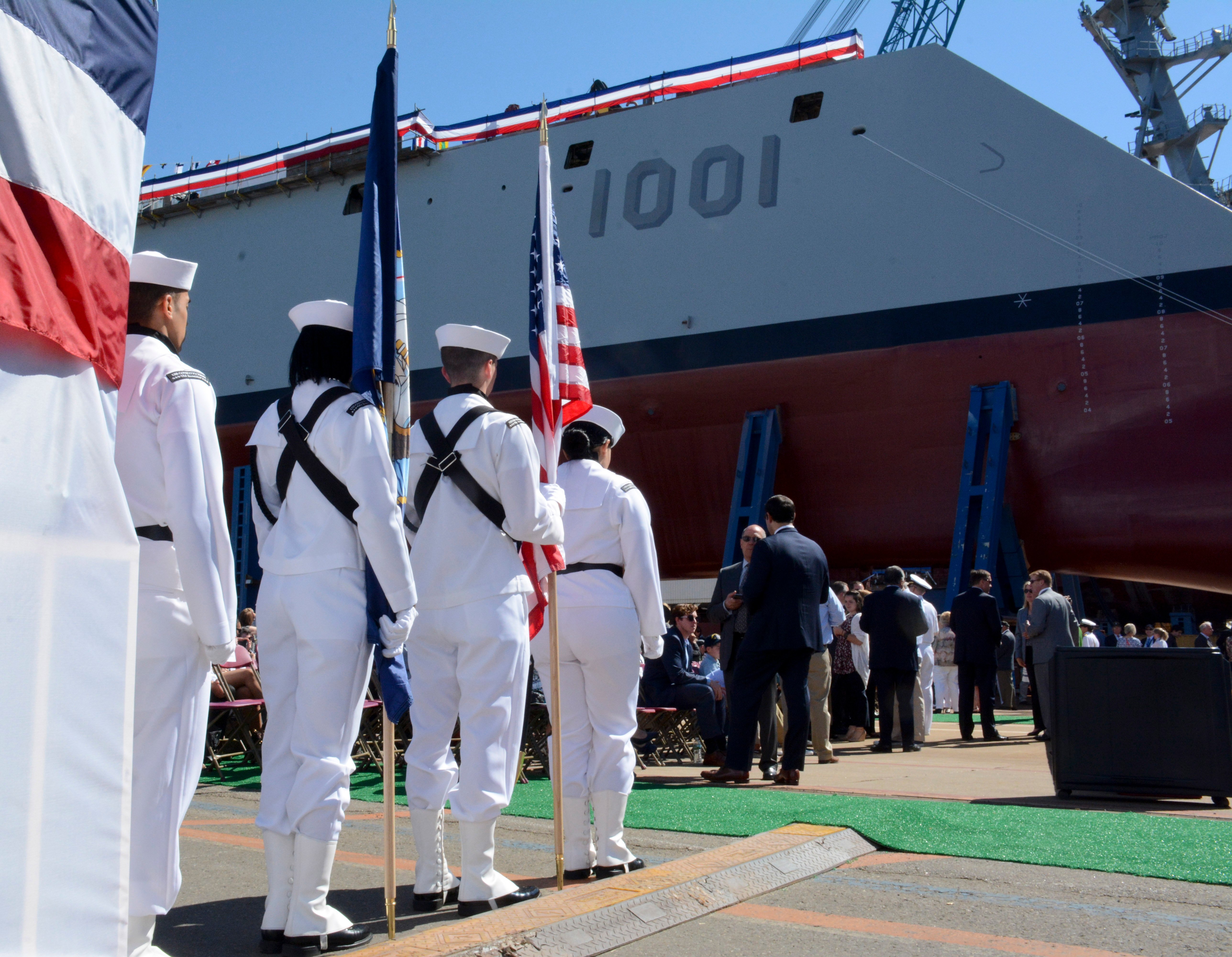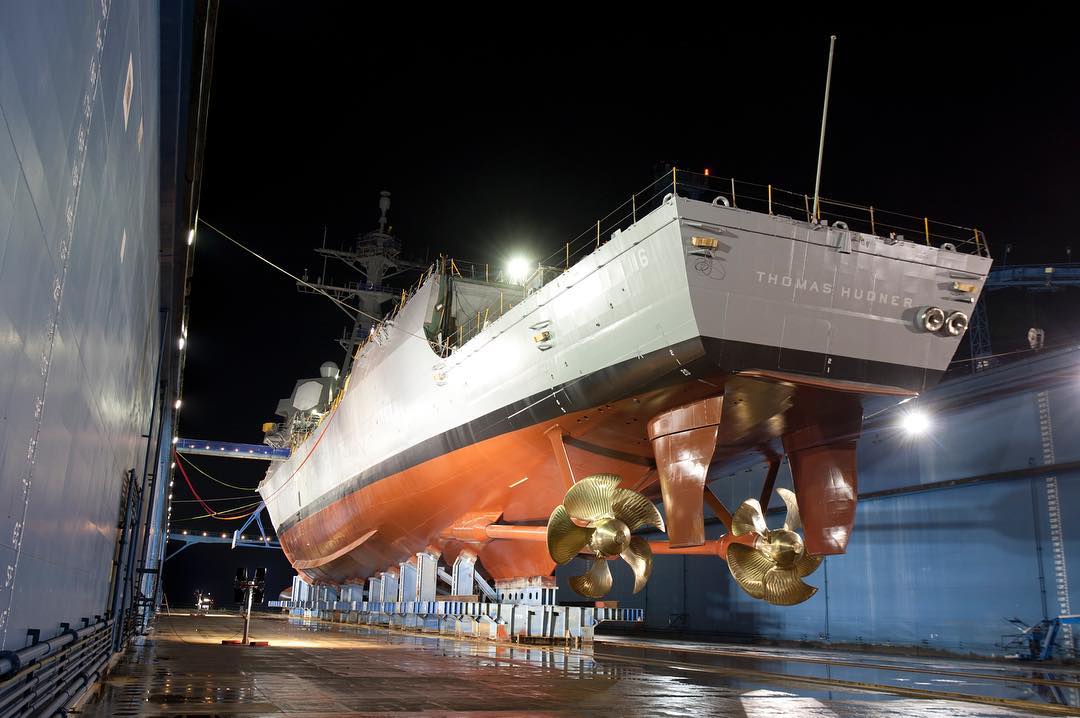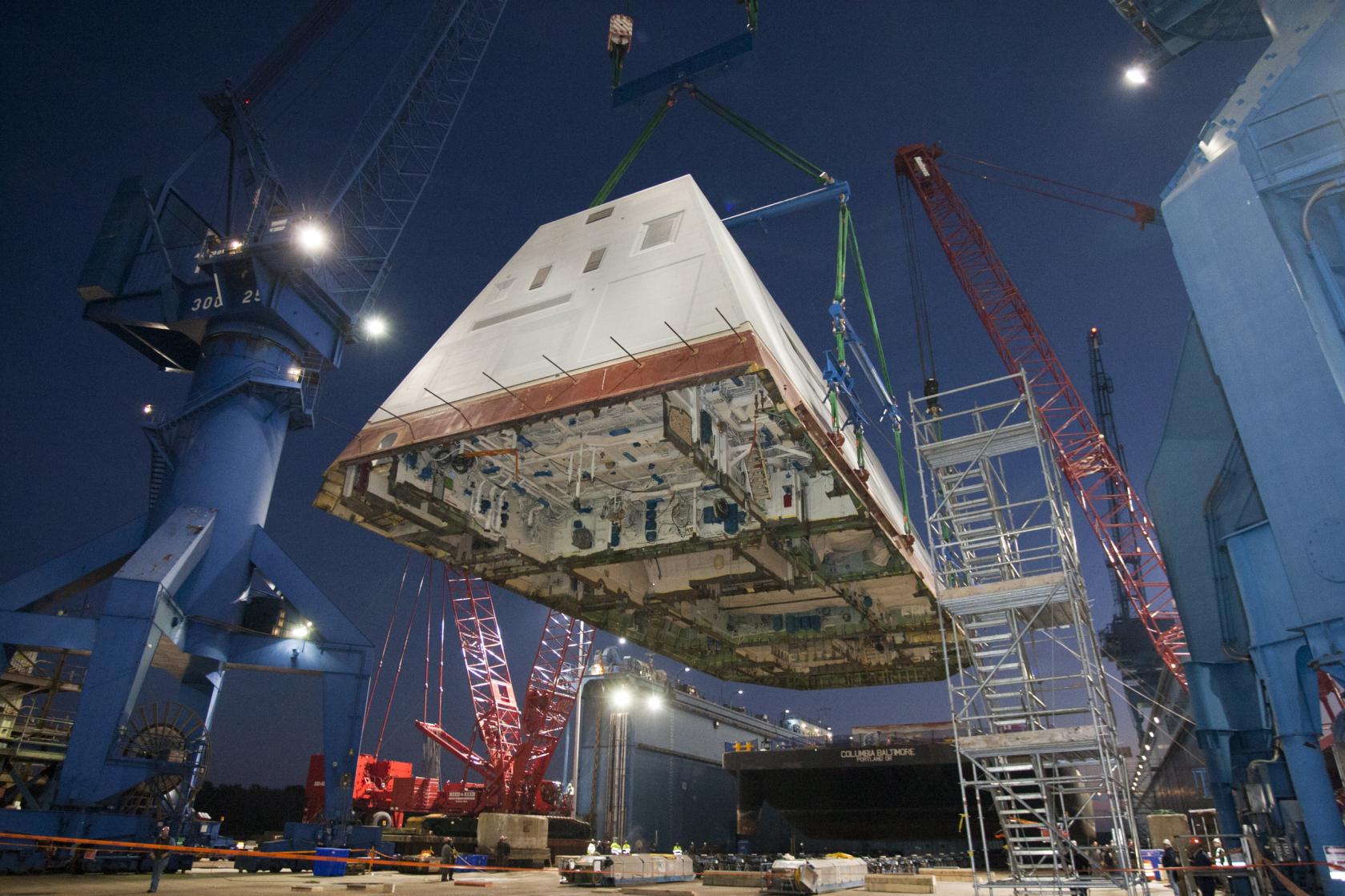
moving the ship from the land level facility to the dry dock which is then
slowly flooded until the ship is afloat, the future USS Lyndon B. Johnson
(DDG 1002) was launched at General Dynamics-Bath Iron Works shipyard on Dec. 9, 2018. US Navy photo courtesy Bath Iron Works
The General Dynamics Bath Iron Works shipyard and the local chapter of the Machinists Union are days from their current labor agreement expiring and still haven’t found common ground after union representatives rejected the yard’s “last, best and final offer” on employee pay and benefits.
The current agreement expires June 21 and covers approximately 3,600 employees at BIW who are part of the Local S6 chapter of the International Association of Machinists and Aerospace Workers.
“The bargaining committees from Bath Iron Works and Local S6 met throughout the day Friday and into the late evening continuing negotiations on a range of issues to finalize a new labor contract. The parties concluded negotiations just after 11:00 p.m. and agreed BIW would communicate its last, best and final offer to Local S6” on Saturday, reads a notice on the BIW website.
Upon receipt of that offer on Saturday, the union wrote on its Facebook page, “The Negotiation Committee unanimously rejects the last best and final contract from BIW. Giving it a [expletive] NO endorsement!!” Two days later, the union chapter posted a list of reasons it urged members to vote against the offer and go on strike.
With the negotiating committee rejecting the yard’s final offer, it’s unclear what will come next. The union members may take a vote on the yard’s proposal, or the standoff could lead to a strike.
This labor dispute follows similar disagreements in 2016 and 2012 – though none have led to a strike since 2000 – and comes as the shipyard has fallen behind schedule on both its destroyer programs.
Shipyard president Dirk Lesko recently said in an interview that the yard is about six months behind on its Arleigh Burke-class ships (DDG-51), which he said likely contributed to the yard not winning this year’s competition for the Navy’s frigate program or a 2016 competition for a Coast Guard Offshore Patrol Cutter program. Though the yard is one of two builders of the DDG-51 program and has secured its place in the two-yard construction set-up, it lost out to Ingalls Shipbuilding in the last round of bidding, winning just four Flight III ships compared to Ingalls’ six.
Additionally, a recent Government Accountability Office report notes that the final ship in the three-ship Zumwalt destroyer program (DDG-1000) isn’t slated to deliver to the Navy until September 2022, nearly 10 and a half years after fabrication on that ship first began. The full acquisition cycle – from development to the end of construction – has also ballooned from 128 months to 285, or nearly 24 years, despite the program shrinking from 32 ships to just three.

Bath Iron Works has struggled with workforce shortages and labor disputes throughout its work on the two programs. The last contract negotiation in 2015 came as BIW was seeing increasing costs and was forced to push back the expected delivery dates of its first two Arleigh Burkes since the construction line restarted. The yard admitted to being behind on the ships, in part due to labor shortages in certain trades.
Workers that year ultimately voted to approve an offer from the yard, despite concerns from union leadership, that would sacrifice annual pay raises for annual bonuses and included both higher pension contributions and higher employee health care deductibles and co-pays, according to a Portland Press Herald article from December 2015.
In that case, the yard and its workforce needed to find a way to move beyond the DDG-51 delays and make themselves more viable to win the Coast Guard OPC contract, which BIW leadership said was needed to avoid any workforce layoffs. The yard ultimately lost the contract to Florida-based Eastern Shipbuilding.

With a string of recent contracting losses, it’s unclear what factors might bring the union leaders, the workforce and the shipyard together to an agreement.
According to a Portland Press Herald article, the three-year offer from Bath Iron Works would have guaranteed employees a 3-percent general wage increase each year, and it would have maintained current shift premiums and some benefits like 401(k) matching and life insurance. It would have increased pension contribution rates and accident and sickness benefits but increased health plan premiums, co-pays and deductibles.
Beyond benefits, also at issue is the yard’s practice of hiring subcontractors to supplement the work being done by unionized yard workers, in an attempt to get work done faster to address the schedule delays the yard continues to face. BIW wrote on its website that it only uses subcontractors when a lack of manning exists and that the new contract would prevent the yard from using subcontractors to replace unionized workers.

“As you know, BIW has been hiring and training significantly since 2018 – in fact we’ve hired over 2,000 people in that time frame. We can’t hire and train people fast enough, and none of the people we have subcontracted have replaced or displaced a BIW employee. This doesn’t change based on the Company’s offer. We can only subcontract due to a lack of manning, facilities, or equipment to complete the work. Additionally, the offer also ensures that no outside resources will be used to overcome a lack of manning if there are involuntary layoffs in the applicable trade. This protection does not exist today and it’s a new addition to our proposed Contract,” the notice reads.
The union pushed back against that in its summary sheet, saying BIW “will have a right to bring subcontractors in whenever they want” and “can have layoffs in every production trade and still have subcontractors in our shipyard.”
This year, contract negotiations also come on the heels of a fight over how to handle the coronavirus pandemic. Union leaders pushed to close the yard and pay the workers to stay home, the Press Herald reported, to keep everyone safely at home in the early days of the outbreak. The yard was deemed part of the mission-essential defense industrial base and urged to remain open by Pentagon leadership.





